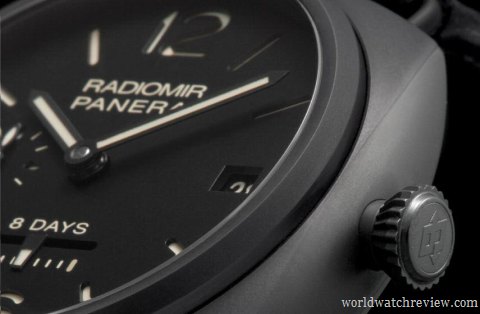Something I forgot to add with regards to mechanical watches was that there are 2 types of mechanical watches, namely manual and self-winding.
Manual Mechanical Watch
 |
| Panerai Manual Winding Watch |
 |
| tourneau.com |
2. The Gear Train transfers the energy to the Escapement.
3. The Escapement meters out the energy into regulated parts.
4. The Balance Wheel uses this regulated energy to beat back and forth at a constant rate.
5. Every certain number of beats, the Dial Train transfers the energy to the hands of the watch.
6. The hands advance.
Self winding Mechanical Watch
This is commonly known as an automatic movement. The main spring is wound by a rotor, which is turned by the movements of the wearer's wrist and gravity, hence powered by kinetic energy.
 |
| Audemars Piguet Rotor (back of the watch) |
When the main spring is wound, it builds up energy, which is slowly released to run the watch. On average, most mechanical watches can run for roughly 40 hours on one full winding. Naturally, once the main spring has released all its stored energy, the balance wheel will stop, which causes the watch to stop, unless it is wound again. Furthermore, mechanical movements could face the risk of over winding the watch, but most mechanical watches these days have a slipping clutch device used on the main spring to prevent this from happening. The diagram below represents the steps involved in the working of automatic movements by Tourneau.com:
 |
| tourneau.com |
2. The Gear Train transfers the energy to the Escapement.
3. The Escapement meters out the energy into regulated parts.
4. The Balance Wheel uses this regulated energy to beat back and forth at a constant rate.
5. Every certain number of beats, the Dial Train transfers the energy to the hands of the watch.
6. The hands advance.
Quartz Watch
The diagram below illustrates the process of how a quartz watch works by Tourneau.com:
 |
| tourneau.com |
2. The electricity makes the Quartz Crystal vibrate at a rate of 32,768 vibrations per second.
3. These electrical pulses are sent via the Integrated Circuit to the Stepping Motor.
4. The Stepping Motor sends every 32,768th electrical pulse to the Dial Train.
5. The Dial Train advances the hands on the watch.
No comments:
Post a Comment